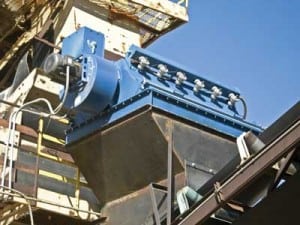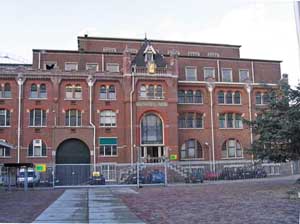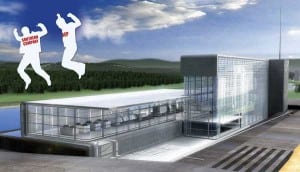-
News
Improved Coal Dust Collector
Martin Engineering has introduced an upgraded version of the MARTIN Insertable Dust Collector, which features improved filters and a smaller footprint to control airborne coal dust at belt conveyor loading points and other bulk material-handling operations. Insertable dust collectors are typically installed to reduce problems associated with central baghouse collection systems, including long runs of […]
-
News
Politics Trump Scientific Integrity
In their recent endangerment finding draft technical support document (TSD), scientists at the U.S. Environmental Protection Agency (EPA) conclude that carbon dioxide emissions are a public health hazard and should be regulated under the Clean Air Act. Federal law requires that regulations be based on scientific information that is "accurate, clear, complete, and unbiased"; the most recent available; and collected by the "best available methods." The EPA’s TSD on carbon emissions violates all of these requirements.
-
-
O&M
The 7,000-Foot Challenge
The Springerville Generating Station in Springerville, Ariz. (Unit 3 was POWER’s 2006 Plant of the Year), uses two lined ponds to hold water collected from its cooling towers. With the construction of Unit 4, the plant’s owner, Salt River Project (SRP), one of Arizona’s largest utilities, wanted to increase the capacity of pumps used to move effluent from one pond to another to avoid the possibility of overflow. SRP engineers wondered if using a vertical turbine pump on a floating barge would improve managing the water levels in the two ponds.
-
Legal & Regulatory
Old Challenges Persist in Impeding Renewable Energy Goals
In June, California issued yet another report on renewable energy. This one, a joint effort of the California Public Utilities Commission (CPUC) and the California Energy Commission (CEC), analyzes implementation issues related to increasing the state’s renewables portfolio standard (RPS) to 33% by 2020. The report is the latest in an increasingly growing number of assessments, policy pronouncements, and administrative decisions examining renewable energy and climate change issues.
-
Coal
City of Springfield’s CWLP Dallman 4 Earns POWER’s Highest Honor
City Water, Light & Power (CWLP), the municipal utilities agency of the City of Springfield, Ill., determined that coal-fired generation was its best alternative for providing long-term reliable and economic electricity to the city’s residents. For negotiating an unprecedented agreement with the Sierra Club that allowed the project to move forward, for choosing the latest in coal-fired technology and air quality control systems as the foundation for the city’s comprehensive energy policy, and for assembling a tightly integrated team that completed the project well before the contractual deadline and under budget, CWLP’s Dallman 4 is awarded POWER magazine’s 2009 Plant of the Year award.
-
Environmental
Help Build the Global Energy Observatory
How would you like to be able to access data on all the power plants in the world and all of their performance metrics, analyze that data, and map it? Those abilities are part of the vision behind the Global Energy Observatory (GEO), an OpenModel website that serves as a wiki for global energy data.
-
Gas
2009 Marmaduke Award: The Hague Repowering Project Upgrades CHP System, Preserves Historic Building
The Hague’s century-old power plant, now owned by E.ON, provides electricity to the local grid and thermal energy for the city’s district heating system. Poor performance from the plant’s 25-year-old equipment and The Hague’s wish to become a carbon-neutral city by 2010 gave birth to the idea of repowering the existing plant. For protecting a historic building while investing in low-emissions electricity generation, achieving improved plant efficiency and reliability, and accelerating the project so the plant could be back online for the next heating season, The Hague Repowering Project is the winner of POWER’s 2009 Marmaduke Award for excellence in O&M. The award is named for Marmaduke Surfaceblow, the fictional marine engineer and plant troubleshooter par excellence.
-
Coal
Revived FutureGen Faces Renewed Funding Obstacles
A little more than a year after the Bush administration abruptly withdrew its support for the FutureGen project, the Department of Energy has again announced it will back the proposed Illinois gasified coal power plant and carbon capture initiative. Though the 275-MW project may be different in technical aspects — it will be initially designed for 60% carbon capture, not 90%, and gasify only Illinois Basin Coal (Figure 2) — it is still riddled with many of same funding problems. Making matters worse, it may have been revived too late: Since the DOE withdrew its support, several major carbon capture and storage (CCS) projects and alliances have sprouted in the U.S., and these could give FutureGen a run for its money.
-
General
USEC: Is the Enrichment Company Done?
By Kennedy Maize USEC, the Bethesda, Md., uranium enrichment company that took over the Department of Energy’s enrichment program in 1992 is claiming that the Obama administration is reneging on promises to provide $2 billion in loan guarantees for the company’s “advanced” centrifuge enrichment plan, made during the 2008 presidential campaign. DOE’s decision to withhold […]
Search







